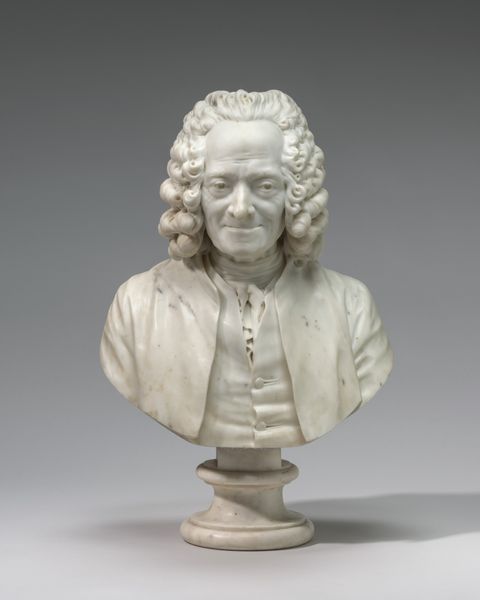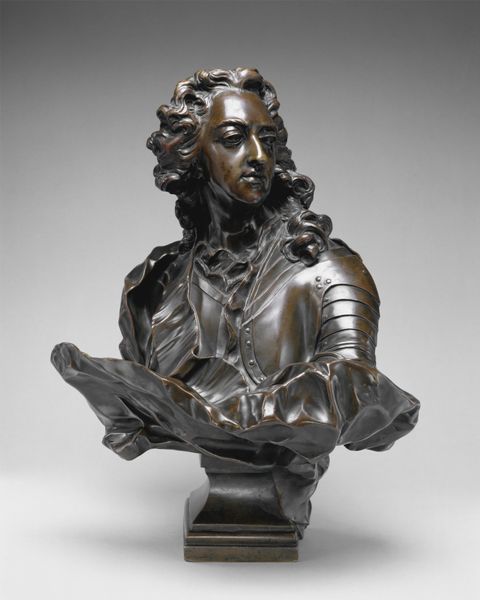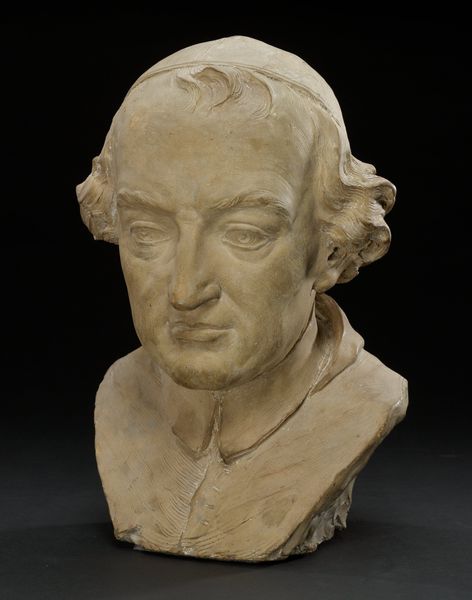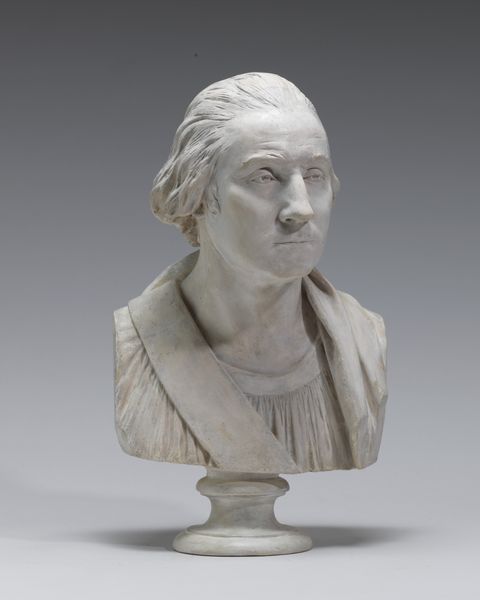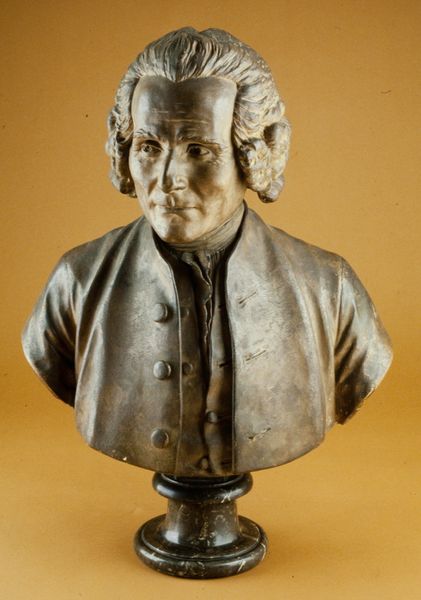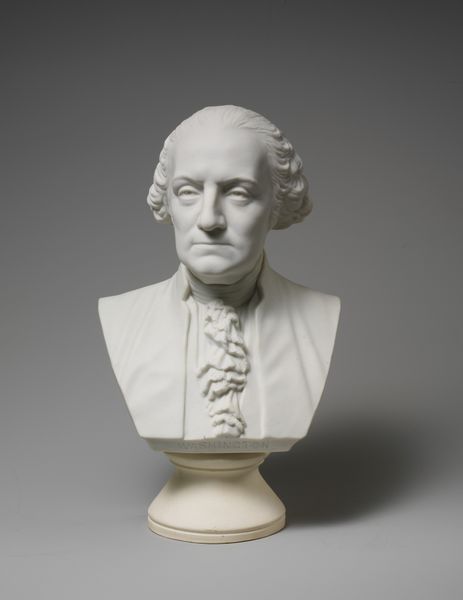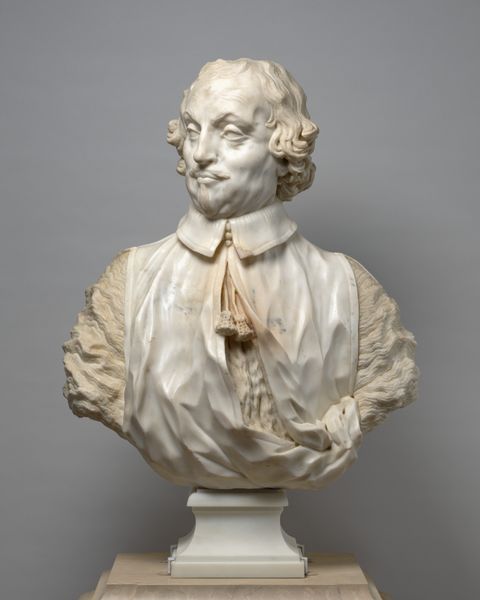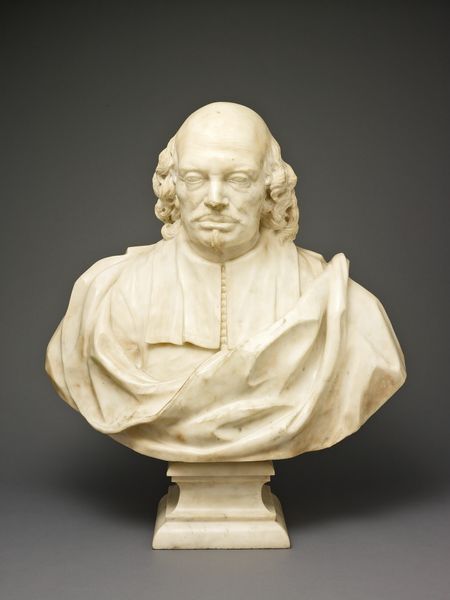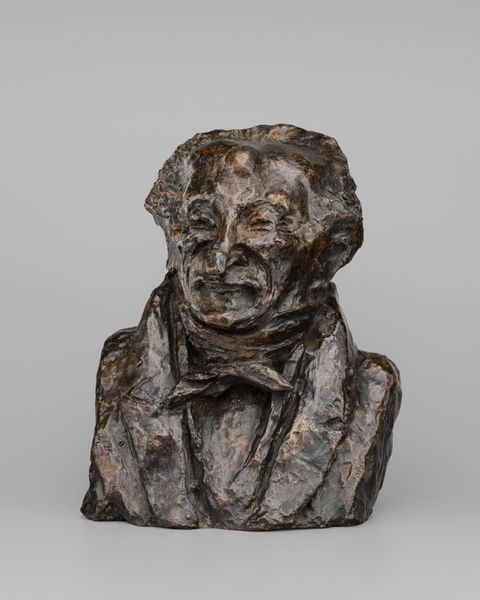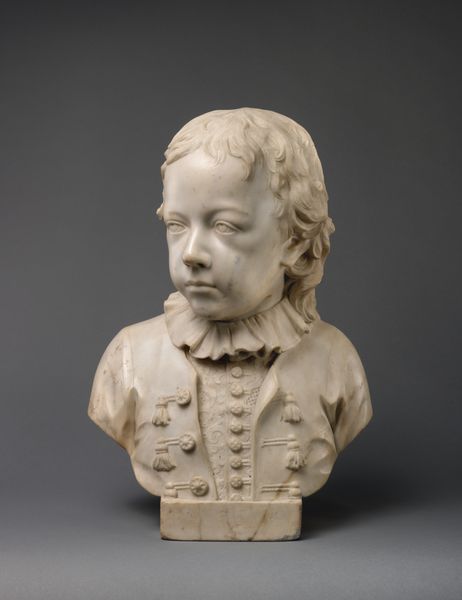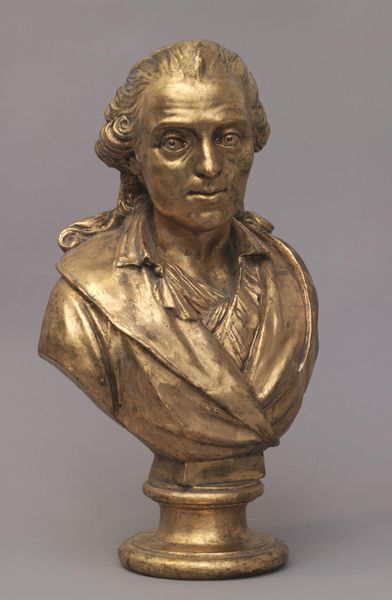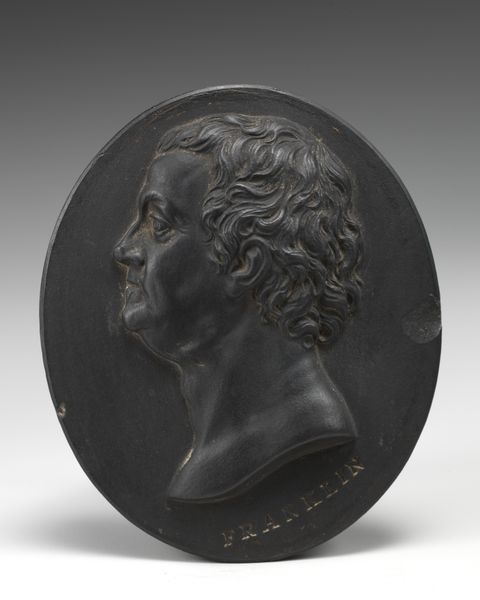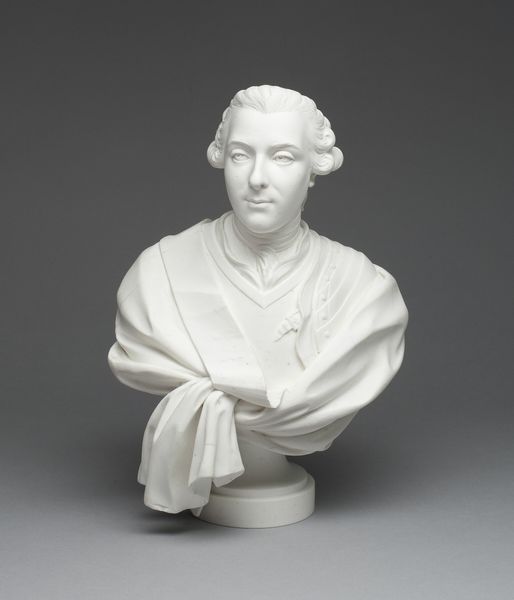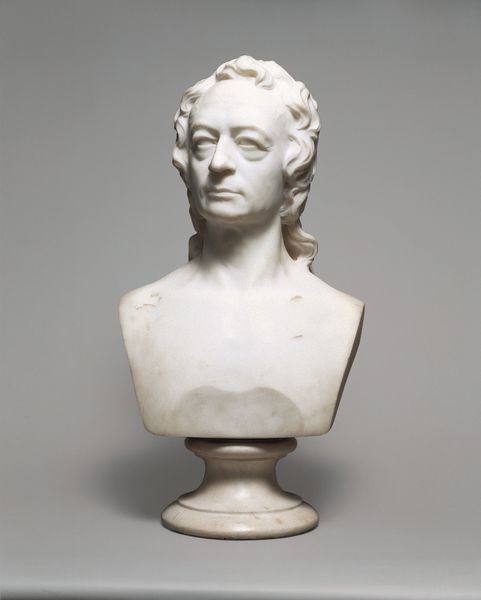
ceramic, sculpture
#
portrait
#
neoclacissism
#
sculpture
#
ceramic
#
classicism
#
sculpture
#
decorative-art
Dimensions: 37.8 × 19.7 cm (14 7/8 × 7 3/4 in.)
Copyright: Public Domain
Curator: Here we have a bust of William Shakespeare, crafted around the late 18th century by the celebrated Wedgwood manufactory. It's rendered in ceramic, and exudes an air of neoclassical grace. Editor: Immediately striking. A somber mood hangs about it. He's looking downwards, quite pensive. The even, matte grey tone only reinforces that feeling. What do you think about that specific coloring in conjunction with the choice of subject, here? Curator: It’s quite telling, actually. Wedgwood was tapping into the burgeoning Shakespearean cult of the late 1700s. The monochrome finish lends it an air of classical antiquity, aligning Shakespeare with the great thinkers of Greece and Rome. It subtly elevates him, visually associating him with that lineage. Editor: I see your point about elevating Shakespeare's image. Still, the composition seems conventional, relying on the formula of a Roman portrait bust: the truncated torso, the gaze directed away. Were there conscious deviations from that structure? Curator: Note the precise details in his attire—the buttoned doublet, the meticulously rendered ruff. This is not just a man of letters; it’s a gentleman, elevated through craft and intellect. And look at how his gaze falls: it's the pose of deep contemplation, which makes the bust more immediate. You see an inward intensity that embodies what readers at the time believed Shakespeare was like. Editor: His melancholic demeanor could tie into Hamlet and all those pained heroes Shakespeare conceived, in effect! Curator: Precisely! The overall effect is one of gravitas, designed to inspire awe and respect. The Wedgwood factory created multiple busts to appeal to differing audiences; they come in a number of differing ceramic finishes, as well as a range of sizes that could befit any parlour, or any personal library. It ensured Shakespeare could become an accessible icon to wider sections of the emerging middle classes. Editor: That's really fascinating to consider—the intent to democratize art via widespread manufacture and create iconic emblems available to everyman. It puts this in an entirely different perspective. Curator: Indeed, understanding its social function allows us to fully grasp its cultural significance. It moves from being a formal rendering of Shakespeare's likeness to becoming something else entirely, namely a symbol of the changing face of Great Britain. Editor: Thank you—that’s altered my perspective in an unexpected way. I came in regarding its composition and execution; I am now intrigued by its wider resonance.
Comments
No comments
Be the first to comment and join the conversation on the ultimate creative platform.
